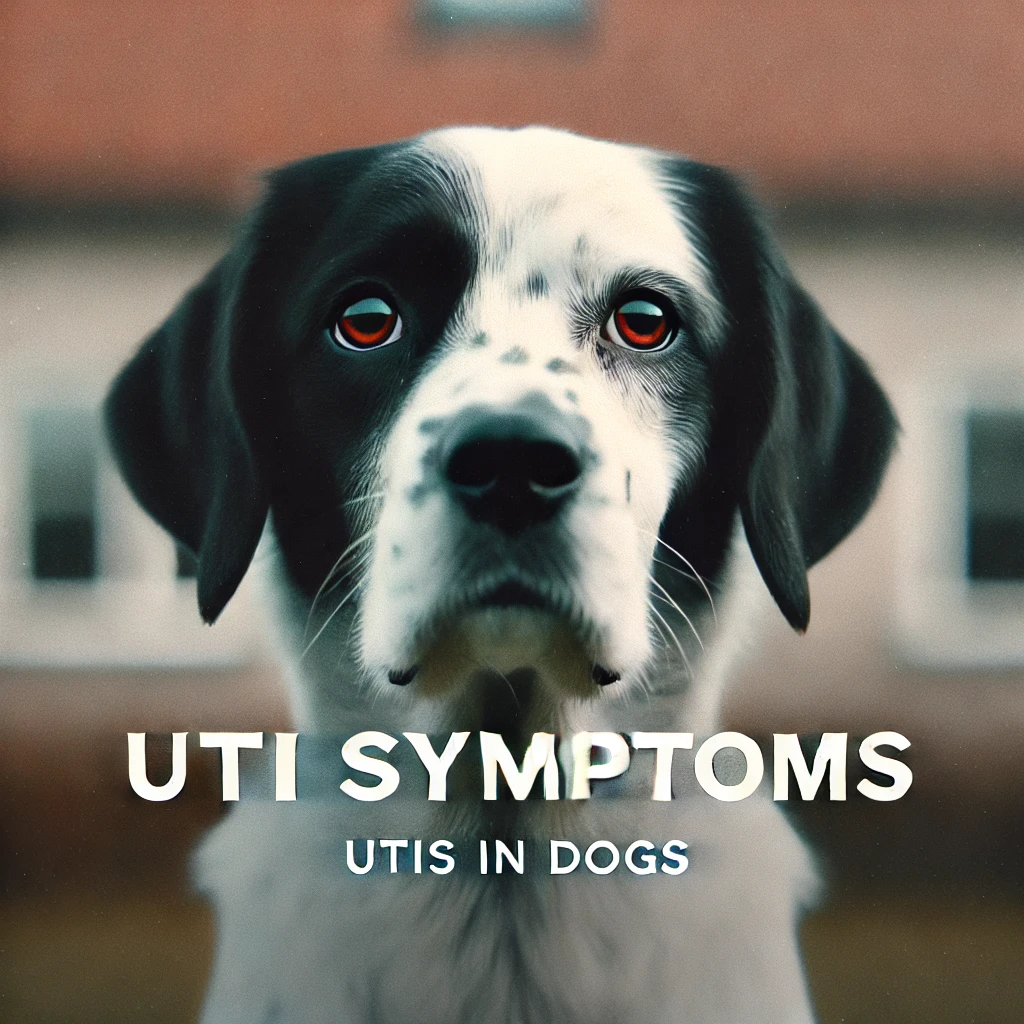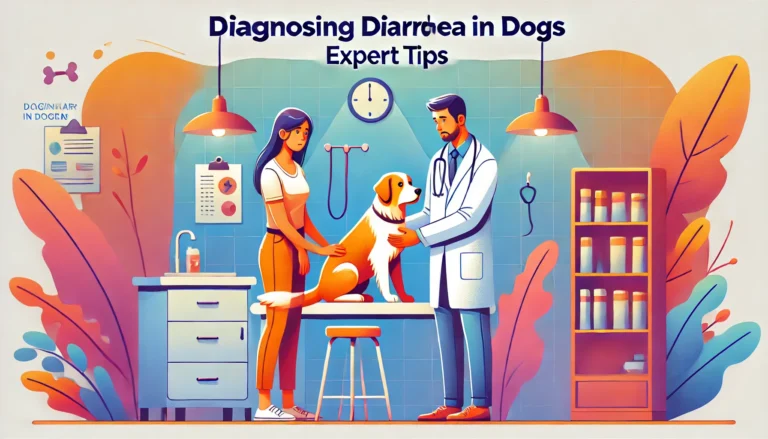UTIs in Dogs: comprehensive Guide to Urinary Tract Infections

Urinary tract infections (UTIs) in dogs are more common than many pet owners realize. Dogs can experience significant discomfort from UTIs, which often show symptoms like frequent urination, difficulty urinating, and even blood in the urine. Knowing the signs, understanding causes, and exploring treatment options can help you better care for your furry friend and prevent these infections in the future.
What is a UTI in Dogs?
UTIs in dogs occur when bacteria, such as E. coli, infiltrate the urinary tract, including the bladder, kidneys, and urethra. These infections may cause inflammation, pain, and frequent urination, and in some cases, they can lead to more severe health issues if left untreated. While any dog can develop a UTI, older female dogs and those with underlying health issues like diabetes are especially vulnerable.

Causes of UTIs in Dogs
The underlying reasons for UTIs in dogs are varied. Here are some common causes:
- Bacterial Infection: The most frequent culprit behind a UTI in dogs is bacteria, such as E. coli or Staphylococcus. These bacteria can enter through the urethra and settle in the bladder, leading to infection.
- Weakened Immune System: Dogs with compromised immune systems, often due to age, diabetes, or Cushing’s disease, are more susceptible to UTIs.
- Urinary Tract Abnormalities: Some dogs have structural issues in their urinary tract that can cause urine retention, making it easier for bacteria to multiply.
- Bladder Stones: Bladder stones can irritate the urinary tract, increasing the chances of infection.
- Hormonal Imbalances in Female Dogs: Hormonal changes, particularly in unspayed female dogs, can affect the urinary tract, making UTIs more likely.

Symptoms of UTIs in Dogs
Knowing the signs of a UTI in dogs is crucial for early diagnosis and treatment:
- Frequent Urination: Dogs with UTIs often feel the urge to urinate more frequently than normal, even if only a small amount is passed.
- Straining to Urinate: Discomfort or straining while urinating is a key indicator of a urinary infection.
- Blood in Urine: Blood in the urine is a clear symptom of a bladder infection in dogs.
- Excessive Licking of Genital Area: Dogs with UTIs tend to lick their genital area more often due to irritation.
- Urinary Accidents: A normally house-trained dog may begin to have accidents indoors if they have a UTI.
- Increased Thirst: To counteract the irritation, dogs with UTIs may drink more water.
Diagnosing UTIs in Dogs
Your veterinarian will likely perform several tests to confirm a UTI and determine its cause:
- Urinalysis: A sample of your dog’s urine will be examined for bacteria, white blood cells, and crystals.
- Urine Culture: A lab culture helps identify the specific bacteria causing the infection, aiding in selecting the best antibiotic.
- Imaging: X-rays or ultrasounds may be used in cases of recurrent infections to check for bladder stones or structural abnormalities.
- Blood Tests: Blood tests may be ordered to rule out underlying health conditions if UTIs are recurrent.
Treatment Options for UTIs in Dogs
The treatment for UTIs in dogs often involves antibiotics to clear the infection, but other supportive measures may be recommended:
- Antibiotics: Most UTIs in dogs respond well to antibiotics like amoxicillin, augmentin, or cefdinir. Your vet may prescribe a specific antibiotic based on the bacteria found in the urine culture.
- Pain Relief: Anti-inflammatory medications can help ease discomfort while the infection heals.
- Increased Water Intake: Encouraging your dog to drink more water can help flush out bacteria.
- Specialized Diets: For dogs with recurrent UTIs, a urinary health diet may prevent stones and promote bladder health.
Home Remedies and Supportive Care for Dog UTIs
Although antibiotics are essential, there are some home remedies that may provide additional support:
- Cranberry Supplements: Cranberry may reduce bacterial adhesion in the bladder, though it’s not a substitute for antibiotics.
- Apple Cider Vinegar: Some owners add a small amount of apple cider vinegar to their dog’s water. However, consult a vet first.
- Regular Bathroom Breaks: Taking your dog out frequently can help prevent bacteria buildup in the bladder.
Do You Know
Even small amounts of onions can be harmful to dogs, and the toxicity level depends on the size of the dog and the quantity of onions consumed. All forms of onions are dangerous, including cooked onions, raw onions, dehydrated onions, and even dishes seasoned with onion powder.
Preventing UTIs in Dogs
While not all UTIs can be prevented, these steps can lower the chances of infection:
- Keep Your Dog Hydrated: Fresh water helps flush bacteria from the urinary tract.
- Hygiene: Keep your dog’s genital area clean to minimize bacterial contamination.
- Frequent Potty Breaks: Allowing your dog frequent bathroom access can reduce bacteria buildup.
- Routine Vet Visits: Regular checkups can catch potential issues early, especially for dogs prone to UTIs.
UTIs in Female Dogs
Female dogs are particularly susceptible to UTIs because of their shorter urethra. Symptoms like frequent urination, blood in urine, and increased thirst are common indicators of a UTI in female dogs. Hormonal changes can also make unspayed female dogs more prone to urinary infections.
Complications of Untreated UTIs
Untreated UTIs can progress to more severe conditions:
- Kidney Infections: Bacteria can travel to the kidneys, causing pyelonephritis, a serious infection.
- Bladder Stones: Chronic UTIs can lead to bladder stones, which can be painful and require surgery.
- Increased Risk of Recurrence: Dogs with untreated UTIs may develop recurrent infections, weakening the immune system over time.
Conclusion
UTIs in dogs can be painful and potentially dangerous if left untreated. By recognizing the signs, seeking timely veterinary care, and taking preventive measures, you can keep your dog healthy and comfortable. Make sure to monitor your dog for any changes in urination habits, ensure they have access to fresh water, and provide regular bathroom breaks to minimize their risk of developing UTIs.
Remember, the key to managing UTIs in dogs is prompt and proper treatment. With the right care, most dogs can make a full recovery and return to their happy, healthy selves.
What are the signs of a UTI in dogs?
The signs of UTIs in dogs can include frequent urination, straining to urinate, crying out in pain while urinating, blood in the urine, or even accidents indoors. Observing any of these symptoms warrants a visit to the vet to address the potential UTI in your dog.
What can I give my dog for a urinary tract infection?
For UTIs in dogs, veterinarians typically prescribe antibiotics such as amoxicillin or cephalexin based on the severity and type of infection. Additionally, ensuring your dog has plenty of water to drink and opportunities to urinate can help flush out the bacteria causing the infection.
Will a UTI go away on its own in dogs?
UTIs in dogs generally will not go away on their own. Without proper treatment, symptoms can persist or worsen, leading to more serious conditions like kidney infections. Prompt veterinary care is crucial to treat and manage UTIs in dogs effectively.
How to prevent UTI in dogs?
To prevent UTIs in dogs, provide clean, fresh water daily and ensure regular, frequent bathroom breaks. Good hygiene and proper grooming, particularly for breeds with denser fur around the urinary opening, are essential. Additionally, feeding a balanced diet and monitoring for early signs of urinary distress can help keep your dog’s urinary tract healthy.
What foods cause UTI in dogs?
There is no specific food that directly causes UTIs in dogs, but diets high in minerals that produce alkaline urine can increase the risk of bladder stones, which may lead to infections. Feeding your dog a high-quality, balanced diet tailored to their specific needs can help reduce the risk of UTIs.
How do I test my dog for a UTI?
To test for UTIs in dogs, a veterinarian will typically require a urine sample for a urinalysis to detect signs of infection, such as bacteria and white blood cells. If needed, a urine culture might be performed to identify the specific bacteria present and to determine the most effective antibiotic for treatment.
What antibiotic is good for UTI in dogs?
The choice of antibiotic for UTIs in dogs depends on the specific bacteria causing the infection. Commonly prescribed antibiotics include amoxicillin, trimethoprim-sulfamethoxazole, and cephalexin. A urine culture can help tailor the choice to the most effective treatment.
Can you treat a UTI without antibiotics?
While minor UTIs in dogs may respond to increased hydration and dietary changes, antibiotics are often necessary to fully resolve the infection and prevent complications. Always consult with a vet before deciding on the treatment path for UTIs in dogs.
What is the strongest natural antibiotic for dogs?
For natural options to support a dog with a UTI, cranberry extract can be effective in preventing bacteria from adhering to the bladder walls, although it is not a substitute for antibiotics in severe cases. Always discuss any natural treatments with your veterinarian to ensure they are safe for your dog.
Can dogs get UTI from holding pee?
es, dogs can develop UTIs from holding their urine for too long as it allows bacteria to grow in the stagnant urine in the bladder. Ensuring regular bathroom breaks can help prevent UTIs in dogs by keeping the urinary tract flushed and clean.
Do dogs with UTI drink more water?
Dogs with UTIs may drink more water due to the discomfort of the infection, which can cause an increase in thirst. More water intake helps dilute the urine and flush out the bacteria causing the infection.
What are the signs of diabetes in dogs?
Signs of diabetes in dogs include excessive thirst, increased urination, weight loss despite normal or increased appetite, lethargy, and cloudy eyes. If you notice these symptoms, a veterinary evaluation is necessary.
What to feed dogs with urinary problems?
For dogs with urinary problems, diets formulated to promote a healthy pH balance and low in minerals that contribute to bladder stone formation are recommended. Specialized prescription diets and supplements may also be advised by your vet to support urinary health.






